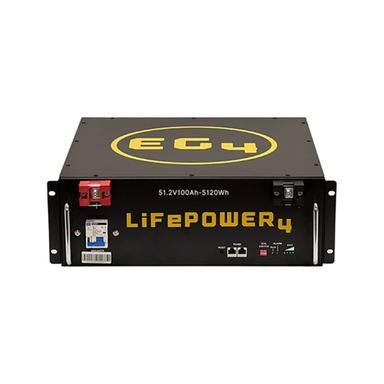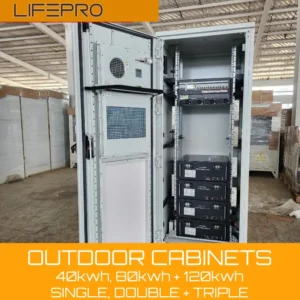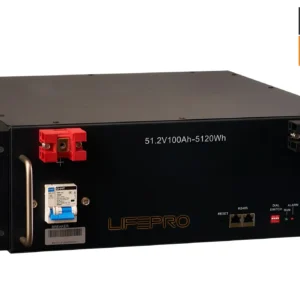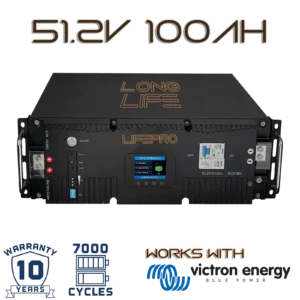When examining the landscape of lithium iron phosphate (LiFePO4) batteries, SOK and EG4 stand out for their quality, reliability, and performance. Both brands have garnered attention in the renewable energy sector, particularly among solar energy enthusiasts and off-grid living proponents. This analysis will delve into the technical aspects of popular LiFePO4 batteries from SOK and EG4, highlighting their features, performance, and suitability for various applications.



Capacity and Energy Density
SOK LiFePO4 Batteries:
SOK batteries are known for their true-to-advertised capacity, typically offering a range from 100Ah to 200Ah per battery. This capacity is ideal for a range of applications, from home energy storage systems to RV and marine applications. The energy density of SOK batteries is optimized for longevity and reliability, with a focus on providing consistent power output over an extended period.
EG4 LiFePO4 Batteries:
EG4 also provides a range of capacities, similar to SOK, with models also available in the 100Ah to 200Ah range. The energy density of EG4 batteries is competitive, ensuring that they occupy less space while delivering equivalent power, which is particularly advantageous in mobile applications and installations where space is at a premium.
Cycle Life and Longevity
SOK LiFePO4 Batteries:
SOK batteries boast a significant cycle life, often rated at over 4000 cycles at 80% depth of discharge (DoD), which translates to more than a decade of use under normal conditions. This long lifespan is a testament to the quality of the battery construction and the efficiency of the internal BMS (Battery Management System).
EG4 LiFePO4 Batteries:
EG4 matches the industry standard with a similar cycle life, also claiming upwards of 4000 cycles at 80% DoD. This level of performance indicates that EG4 batteries are built to last, providing users with a reliable power source over many years.
Charging and Discharging Rates
SOK LiFePO4 Batteries:
SOK batteries are designed to accommodate flexible charging and discharging rates, suitable for various applications. Typically, they can support continuous discharge rates up to 1C and charge rates up to 0.5C. This means a 100Ah SOK battery can be discharged at 100A and charged at 50A, making them versatile for different energy needs.
EG4 LiFePO4 Batteries:
EG4 batteries offer similar charging and discharging capabilities, with most models supporting 1C discharge and 0.5C charge rates. This compatibility with high-rate charging and discharging makes EG4 batteries suitable for applications requiring rapid energy availability and storage.
Built-in Battery Management System (BMS)
SOK LiFePO4 Batteries:
The BMS in SOK batteries is designed for efficiency and safety, providing overcharge, over-discharge, over-current, and temperature protection. Additionally, the BMS facilitates cell balancing, ensuring that each cell in the battery operates optimally, which is crucial for maintaining the battery’s health and extending its lifespan.
EG4 LiFePO4 Batteries:
Similarly, EG4 batteries come equipped with a sophisticated BMS that offers protection against common battery issues, including overcharging, deep discharging, and overheating. The BMS also supports cell balancing, which is essential for the longevity and performance of the battery.
Price and Value
SOK LiFePO4 Batteries:
SOK batteries are generally considered to offer excellent value for money, given their longevity, reliability, and performance. While they may carry a higher upfront cost compared to traditional lead-acid batteries, their extended lifespan and lower total cost of ownership make them a financially sound investment over time.
EG4 LiFePO4 Batteries:
EG4 batteries are competitively priced, offering a similar value proposition to SOK. The brand is known for providing high-quality batteries that meet the demands of rigorous applications, ensuring that consumers receive a product that balances cost with performance and durability.
Conclusion
Both SOK and EG4 LiFePO4 batteries offer exceptional quality, performance, and reliability for a wide range of applications. The choice between the two will largely depend on specific application requirements, brand preference, and potentially the level of customer service and support offered by the company. In terms of technical specifications, both brands are closely matched, providing durable, high-performance batteries that promise long-term reliability and efficiency for energy storage needs.
50kwh Outdoor Lifepo4 Battery 10 x 5.12kwh EG4 OEM
$35,789.00Available on backorder
OEM EG4 Australia – EG4 LifePower4 Lithium Battery | 48V 100AH | Server Rack Battery | UL1973, UL9540A
$1,999.00 – $9,995.00Available on backorder
OEM EG4 Australia – LIFEPRO LL-S Lithium Battery | 48V 100AH | Server Rack Battery
$3,179.00 – $96,000.00In stock







